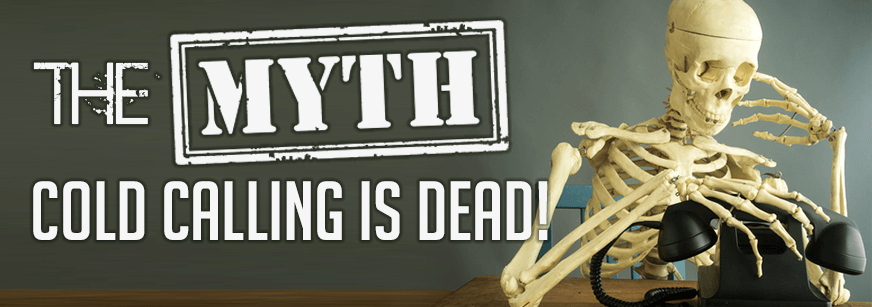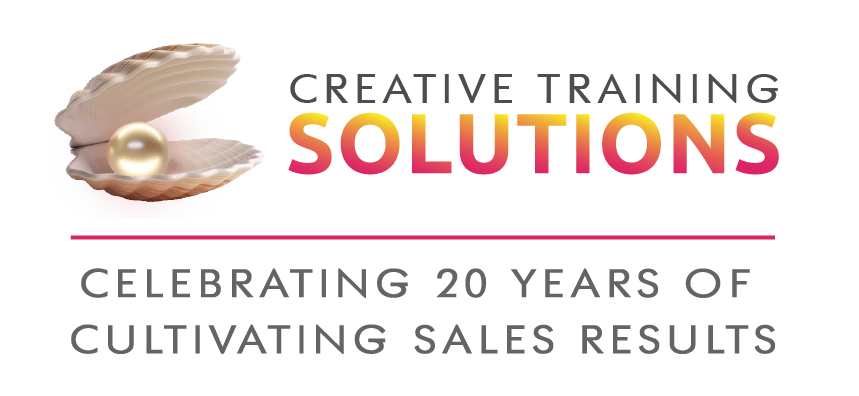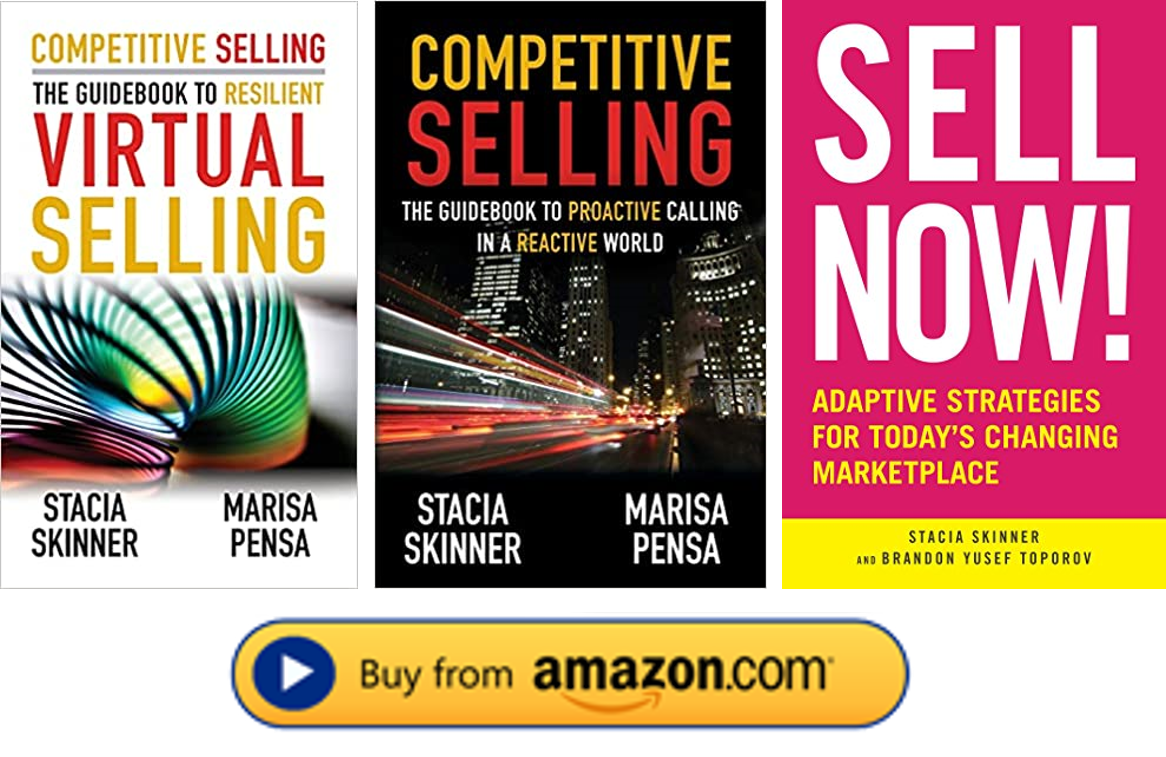Are you still struggling with virtual selling? 3 reasons why and what you can do about it.
March 19, 2021
As we reflect on the past year, it is clear virtual selling isn’t going away. It will continue to be a key driver for finding and converting new business.

March 2020.
Trips were canceled. In-person meetings came to a screeching halt. Budgets were frozen. Unemployment skyrocketed.
The coronavirus pandemic of 2020 drove a radical, nearly overnight shift from face-to-face selling to virtual selling as we all dealt with lockdowns and quarantine.
Fast forward to today, March 2021, and we’re still dealing with many restrictions and limitations.
As we reflect on the past year, it is clear virtual selling isn’t going away. It will continue to be a key driver for finding and converting new business. That’s not to say you can’t meet in-person, but you’ll have to work even harder to earn that right. Your prospects and customers are hesitant; some aren’t allowing visitors and others aren’t even back in the office yet.
We can’t let that deter us. We still need to build relationships, fill our pipelines, and grow our business. We just have to do it differently. We have to embrace this new evolution of sales.
Easier said than done though, right?
For a lot of sales professionals, especially outside salespeople, virtual selling is still a struggle. This transition was forced. Outside salespeople don’t like being told what to do. I know because I’m a sales professional who thrives on interacting with customers, visiting their office, and being able to see the internal operation. All of this continues to be stripped away from us as we deal with the lingering threat of COVID-19 and its variants.
That said, we need to be able to move forward. Everyone adjusts at a different pace, and that’s okay, but you can no longer deny the reality of the situation. If you do, you’ll be lost and left behind – or worse – you might not have a job.
Why are you still fighting it? Here are 3 reasons and what you can do to overcome your resistance.
Reason #1: You don’t believe you can build strong relationships this way.
Is it more challenging to build relationships virtually? Yes. Is it impossible? No.
You just need to approach it differently. When you’re used to meeting in-person, you’re used to benefits like more time for the meeting, more visibility into body language and non-verbal cues, more engagement, and more chances for small talk and side conversations. You’ve probably even considered these things as part of your sales strategy, but with virtual meetings, it can feel like you’re flying blind.
Don’t let that frustrate you. Instead, use this as an opportunity to be more proactive and deliberate about making the time you have for virtual meetings even more meaningful.
How can you gain a competitive selling advantage: Turn your video on.
Although this tip seems simple, it's important to keep your video on when you're meeting virtually. Video allows you to build connections with your prospects and customers by showing them you’re a real human being with a smile. Video also opens people up to trusting you more because they can see you. In addition to making sure your video is on, consider warming up the “room” before diving into business by saying something like, “Before we get going, I just wanted to do a quick check-in to see how everyone is doing.” This can make all the difference in creating time and space within the meeting to establish rapport and make a personal connection.
Reason #2: It’s harder to gain and keep a prospect or customer’s attention.
Virtual meetings in general and video meetings, in particular, are notorious for being exhausting and unengaging. Also known as “virtual fatigue.” Video meetings are far more taxing on the brain because they require more focus than face-to-face meetings. You need to work harder to process everything happening, which consumes more of your energy. Not to mention competing with the many things that vie for your prospect or customers' attention, like their inbox, projects, newsfeeds, and other notifications, which can easily distract them from being fully engaged during the meeting.
How can you gain a competitive selling advantage: Master a shorter sales conversation.
Shorter and more focused sales conversations lead to increased attention and engagement. Your buyers are busy. They only want to attend meetings where they know what the purpose and payoff are. Schedule your virtual meetings for a maximum of 30-45-minutes and make sure your meeting attendees know the meeting purpose, what topics you’ll cover, how long the meeting will take, and that you’ll be using video. The key to mastering this type of meeting is planning.
Reason #3: Technology makes it harder to deliver a smooth meeting experience.
You know exactly how to lead an in-person meeting, you’ve been doing it for years. Virtual meetings have different dynamics, especially when it comes to dealing with technology. It’s Murphy’s Law, anything that can go wrong will go wrong, which can cause unnecessary anxiety that can distract you from playing your A-game. Technology glitches and issues happen, it’s not the end of the world. You just need to be prepared for how to handle it when it happens (and it will happen!).
How can you gain a competitive selling advantage: Practice before every meeting.
An essential part of sales is how you perform under pressure. Whether you’re meeting in-person, over-the-phone, or virtually, you need to anticipate and be prepared for whatever is thrown your way. That means practicing what you will say and how you will say it in the meeting environment. For virtual meetings, you need to practice leading the conversation with the technology. If you’re using any features like chat or annotation, you need to practice exactly how you would as if it were the real meeting. If you’re using a technology you’re unfamiliar with, make sure you try it out a few times before the real meeting. This will help smooth things out and give you more confidence in your ability to both lead the conversation and drive the technology.
Virtual selling requires a significant shift in the use of traditional selling skills to create a more engaging and connected buyer experience. Virtual selling is a mindset. It’s not just about convenience, it’s about having the flexibility to continue to drive relationships while being prepared for whatever life throws at you.
Virtual selling is here to stay. It’s time to stop fighting it and start using it to give yourself a competitive advantage.
ETIQUETTE CORNER:
Virtual Hostess with the Mostest
There’s just no substitute for good manners in all of our daily interactions, and they’re certainly appreciated more than ever in workplace meetings. There are a few age-old guidelines that comprise good meeting etiquette — being on time, maintaining eye contact, paying attention — applying those same principles to our video meetings can go a long way toward a productive business environment. It can also help elevate your reputation into “great meeting host” territory.
1. Be early for the meeting.
Whether you're the prospect or the salesperson, being early is a competitive advantage. It gives you an opportunity to get settled in and provides a chance to get to know your meeting attendees before you get started. Just a few extra minutes can help accelerate rapport and relationship building.
2. Display a welcome page.
Nothing makes a guest feel more accepted or appreciated than a warm welcome. Displaying a welcome page as your meeting attendees join the meeting will help put everyone at ease knowing they are in the right place. You will look professional, prepared, and put together, which helps make a great first impression.
3. Pay attention to body language and other non-verbal cues.
Communication is 55% body language, 35% tone of voice, and 10% the words you say. To communicate effectively in virtual meetings, your body language, and non-verbal communication matter. Vocal tone, eye contact, and appropriate gestures all increase our ability to connect with clients or colleagues, build or reinforce trust, and communicate most effectively.
These tips are just little reminders to help you make the right impression and get the most out of your virtual meetings. Good virtual selling to you!

Recently, there has been quite a bit of chatter on social media and in articles declaring, “Cold calling is dead!” But is it? I think it is more like 99% of salespeople don’t like to do it instead of it being dead. Cold calling could never be dead! Maybe it depends on your definition of a “cold call.” A colleague I respect from the sales training industry recently said something that I agree with 100%. He stated: “These declarations of death usually come from people who FEAR cold calling, STINK (a different word was used — use your imagination) at cold calling, or both.” Most of us think of a cold call as walking up to the door of a company we have never done business with, approaching the receptionist, and asking the infamous question: “Can you tell me the name of the person in charge of…?” Yes. That is one form of cold calling, but that is not what the majority of us do. A more realistic definition of a cold call is: A call (either on the phone or face-to-face) to someone you have never spoken with before, with a specific objective. For most of us, the objective of the call is to set an appointment to talk further. So a cold call can be a variety of things. It can be a call to: a name on a list, a referral, a new contact within an existing customer, a dormant account, or a prospect in a new territory that you are taking over. It can also be a walk-in to an organization. There is an art to successful cold calling, but there is also a process to it. So here are five tips to refine your cold calling process: 1. Have your list ready . The day before, make sure you have the company names, contact names and phone numbers of those you want to call. Mix it up a bit by making calls to those who have never done business with your company, accounts that are now dormant, and referrals. This way, you can go down your list without procrastinating and you’ll have some variety. 2. Schedule time in your calendar each and every day to do these types of calls. I know you have heard this before! But, I’m not asking you to block out several hours at a time — just for you to schedule fifteen minutes in the morning and fifteen minutes in the afternoon. You should be able to knock out anywhere between ten and fifteen calls in that amount of time. 3. Be specific with your objective for the call and stick to it! This is where scripting can help you. For a cold call, remember, you are doing interruptive marketing . The person you are calling is not waiting for your call. Instead of trying to get into a long dialog, respect their time and ask for an appointment in the future (on the phone or face-to-face) so they can be prepared. Remember: “How is Tuesday at 2:00?” 4. Don’t get discouraged when you get a “No.” At the same time, don’t stop making calls when you get a “Yes.” Remember, we are in the business of getting “No’s.” We have to get the “No” in order to find our “Yes.” It is the law of ratios. Make sure you get your “No” ratio. When you get your “Yes,” don’t stop! You are on a high and sound more positive on the phone, so make a couple more dials and capitalize on that happy mood! 5. Be prepared for the negative responses you will hear. You know the most common negative responses you get when you call. Make a list of those you hear and learn how to turn them around to your benefit. Realize the first response is a “knee-jerk” reaction and not the real reason they will not meet or talk with you. You need to keep going to the second or third negative response to find out the real reason they are saying “No.” In sales, we cannot stay in business without growing the business and cold calling can be a critical part of accomplishing that goal. These tips presented here may help you overcome your FEAR, or at least dial the STINK way down! Use your art as a salesperson, but also put a process to it in order to gain great results. Let’s just pick up the phones! ETIQUETTE CORNER: Putting Your Best “Hello” Forward While we’re on the subject of cold calling, let’s talk about making a good impression by using good phone manners: 1. When making a cold call, do not use speakerphone. This is considered rude. People feel they are on stage, even if there is no one else in the room. (On a regular call, if you want others in the room with you to join the conversation, start by using the handheld and then let the person know you will be placing them on speakerphone.) 2. Always state your name and your company name clearly. This applies even when this is not your first conversation. There is nothing more frustrating than someone calling me and saying: “Hi, Stacia. It’s John.” Remember, you are doing interruptive marketing. In many cases, you won’t have the person’s full attention. Tell them who you are and where you are from, so they can listen to what you are saying versus struggling to figure out who you are. 3. Your voice is your image. When using the phone, 90% of the conversation is your tone and only 10% is the words you say. Voice tone is critical to your success. Sit up or stand up at your desk when you make calls. This brings your diaphragm up and you sound better. Smile and dial. Yes, people can hear your smile. Put a mirror at your desk and look at yourself while you are on the phone. 4. Guard against talking too slowly or too quickly. Try to match the speed of the person you are talking to, otherwise your words might be misinterpreted. 5. Allow the person you are speaking with to hang up before you do. We have all been in the position where we think the conversation is over and we hang up the phone, accidentally cutting off the person mid-sentence. If you make it a habit of hanging up last, the likelihood of that happening goes down. So put your best “Hello” forward by always using good phone etiquette. Your efforts will pay off!

It’s extremely difficult to keep up with the latest technological innovations. In fact, it’s impossible. Things change too quickly. As salespeople, our jobs are already challenging enough without constantly having to learn how to use the latest and greatest new gadget. How about if we take a break from this new stuff for a moment? How about if we do things “old school” for a change? I n doing this, we run the risk of being ridiculed. We could hear, “That’s so old school. Get with the program. This is the 21st century!” But can’t the old school and the new school work together? Sure, they can. There is a reason older selling tactics stick around year after year or even decade after decade. Some of the tactics are just about common courtesy, while others are ways to keep you accountable (ugh…not that!) or give you the competitive edge. Here are five “old school” tactics that are a great complement to the fast-paced technological world we live in today. 1. Pick up the phone. Our lives are full of distractions. Lots of those distractions come from being constantly connected to our cell phones and computers — emails, texts, LinkedIn, Facebook, Twitter, Snapchat, news feeds…the list goes on and on. If you want to stand out from your competitors, pick up the phone and make a live connection. If you ask business people if their phones ring as much today as they used to, most will say they don’t. If you ask business people how many emails they get each day, their eyes will roll back as they respond, “Way too many!” Instead of emailing a prospect, customer, or even co-worker, try picking up the phone. Hearing someone’s voice can be refreshing. Even if you leave a prospect a few voicemail messages that do not get returned, you have put yourself in a position for an email to be positively received because of the effort you have made trying to reach them by phone. 2. Take notes on a piece of paper. You may argue with this directive because you can type faster than you can write. But does the information you type stick with you? Studies have shown that taking a pen to paper helps you retain the information better than typing it. So next time you have a meeting, whether it is by phone or in person, set your laptop aside. Pull out a pad of paper and take real notes. You can always transfer the information onto your database after the conversation. See if you pay better attention and do your job a little more effectively. An additional benefit to trying this is the person you’re talking with won’t hear you typing and think you are not giving them your full attention. They know all about distractions, too. 3. Use tick sheets to figure out ratios. As someone who has been in the sales training business (and done my own prospecting) for 22 years, this technique still works for me. Talk about accountability! The very next time you sit down to do prospecting calls, keep track of your activity by making simple tick marks on paper. Have your list ready. Go. One tick mark for every dial you make. One tick mark for every voicemail you leave, etc. Having a visual of the work you are actually doing is a good reality check. Instead of stopping after each call to log in the information into your computer, use that piece of paper to write your notes and keep the momentum going. You start to develop a rhythm if you don’t stop in between calls. After you have gone through your list, then put the information in your database all at once. This experiment does not need to go on forever. Commit to tracking your activity like this for three weeks. Then stop using the tick sheet for a week and see if you notice any difference in your productivity. 4. Handwrite a thank you note. This is a lost art in today’s technological world. A handwritten note is something people enjoy getting. This small effort can give you a competitive edge. When I mention this idea I hear, “Well, I email them a thank you.” That is not nearly as personal as writing a handwritten note. Remember, an email can be quickly deleted and forgotten. A handwritten note will be remembered. I write a handwritten note to everyone I talk to for the very first time, whether on the phone or face-to-face. It is a small gesture of appreciation for the time they spent with me, whether I am looking for a business opportunity or not. Take the time to write that note. You might be pleasantly surprised by the reaction you get! 5. Build strong business relationships. We live in an information age, and that information is coming at us faster and louder all the time. In the midst of all that noise, we must remember, the key to our success in business is still building solid relationships with people. When it comes to marriage, the stronger the relationship, the better chance it has of lasting. The same can hold true with a business relationship. The stronger your relationships, the more likely people will stick with you and not go to your competition. People buy from people they know, like and trust. This kind of relationship cannot be built by electronic communication alone. Cultivate your relationships by using all means of communication — phone calls, emails, face-to-face meetings, sending handwritten notes, text messages, etc. We need to be smart about how we use technology and be sure we are relating to others in a personal way. These tactics may be old school but they can still work. Take a breather. Look away from your screen. Do something different and see how these old school ways can boost your sales. You might be surprised! ETIQUETTE CORNER: Navigating the (Un?)Friendly Skies My job makes air travel unavoidable. But covering great distances…in a short amount of time…in a very small space…with lots of stressed out people…can lead to some bad behavior. There is a shortage of patience and an abundance of rudeness. So let’s not personally add to the mayhem of flying. Here are some dos and don’ts to make the skies a bit friendlier: 1. Be mindful of the person sitting next to you. There is no reason why we cannot be friendly to the person or people sitting next to us. If we are going to be sitting very close to someone — whether it is a one-hour or an 18-hour flight — why not just say “Hello!” This is common decency. You don’t have to have an in-depth conversation and bring out the baby pictures, but just saying hello is just being nice. And you never know — I have gotten business from people I have met on a plane just by striking up a brief conversation. 2. Don’t be a space hog. Airline seats are tighter today than ever, so personal space on a plane is almost non-existent. Don’t be the passenger who decides to take up every possible inch and even infringe on your neighbor’s space. This includes taking over the whole armrest for the entire flight, using most of the middle seat legroom (if that seat is not occupied) or being the dreaded sleeping leaner. Share the space that is provided. That armrest supposedly can hold two arms. Having the middle seat is admittedly awful, but the other two seats aren’t much better. If you sleep, try to stay put. Be cordial and realize all of us are simply trying to get to our final destination without a gross story to tell. 3. Use your inside voice. I remember telling my children “Don’t talk so loudly. Use your inside voice.” This applies to people on an airplane, too. Use your inside voices! If you are on the phone, or even talking to someone next to you, be aware of the volume of your voice. Everyone in your section of the plane is not interested in hearing your conversation. This issue can become a bigger problem when there is alcohol involved. Take a look around to see if you might be disturbing others. Or better yet, when in doubt, try to quiet it down. 4. Be courteous to your neighbors in back of you. Airlines have certainly not made it easy for travelers by shrinking the seats and the legroom you get, but let’s be courteous! If you are going to put your seat back, do you really have to put it all the way back? Or could you just go back a little ways to make it more manageable for everyone? Also, before pushing your seat back, check to make sure the person behind you is aware that it’s coming at them. I have seen computer screens crack because the person in front of them whipped the seat back without checking first to see if there was an open laptop on the tray table right behind them. 5. Don’t be tempted to use your seat as your personal powder room. Be careful of self-grooming on the plane. It’s understandable that we all want to look put-together when we get off the plane, especially if someone is meeting us or we are heading straight to a meeting or event. Doing a quick check of your hair and reapplying lipstick or blush is fine, but that’s about it. There should be no teeth flossing or — can you even imagine — toenail clipping (it has happened) or perfume/cologne spraying. Please! Save it for the airport restroom when you deplane. So, the next time you are on a flight, be courteous to those around you — and especially to the over-stressed flight attendants — and your journey could be a lot more enjoyable. In the meantime, if you have any memorable air travel experiences you would like to share, email them to me I’ll publish the best ones in an upcoming newsletter and give you the credit. Safe travels!

